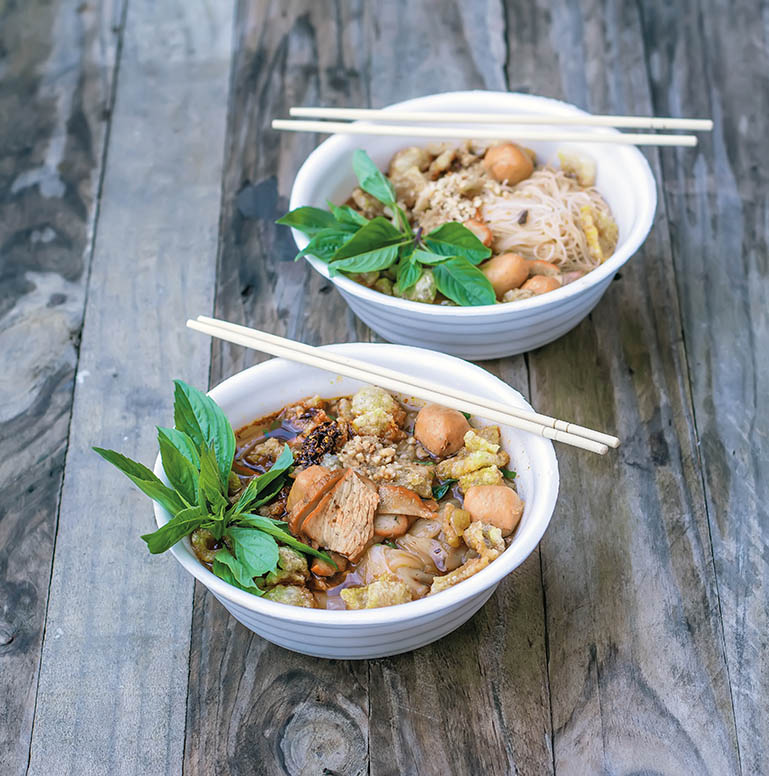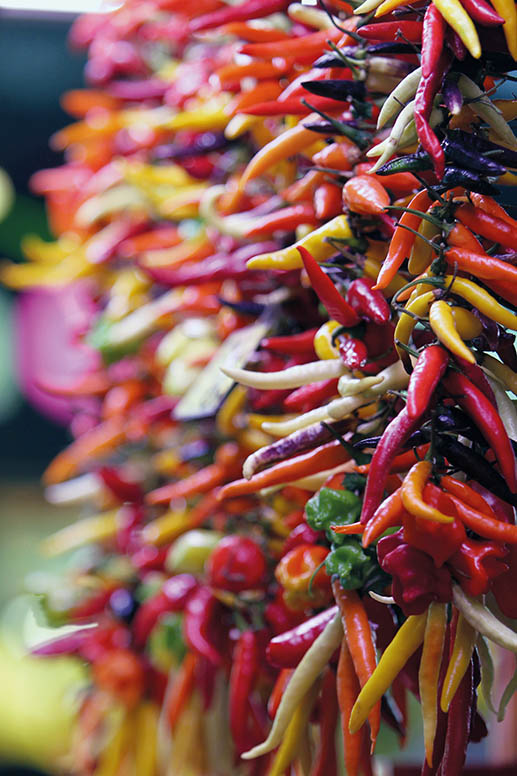Addicted to the pain and pleasure of capsaicin, Alex Rushmer embarks on a quest for the ultimate chilli sauce.
It all began 15 years ago in the kitchen of a Leeds University hall of residence. I was visiting a friend who told me I could help myself to anything in his food cupboard while he was at a lunchtime lecture. Next to the instant noodles, which quickly found their way into a pan of boiling water, was a neat-looking bottle of exotic-sounding sauce with a label that read ‘Encona’. I liberally poured the vivid sauce over my bowl of cooked noodles and thrust a forkful into my mouth. The rush of heat was aggressive and instant, and the effects were both outwardly apparent – my face flushed red and my forehead began to bead with sweat – as well as perceptible only to me, as the pain washed over my lips in waves and filled my entire mouth with an intense and raw heat.
Of course, I’d eaten spicy food before: I’d never been one to shun chilli sauce on a late-night doner kebab and I shied away from the korma end of the scale whenever we ordered an Indian takeaway. But this? This was something else entirely. This was a new level of taste and flavour perception. I felt as if every previous flavour had been monochrome and two-dimensional, and only now was I experiencing a holistic eating experience – lurid technicolour and stunningly rendered in three dimensions. I moved to the sink, shoved the dirty mugs and plates to the side and drank long sips, directly from the cold tap, in an effort to dull the pain. Eventually it began to subside to little more than a background hum, a teasing ripple across my poor shocked palate. And so I went back for more.

If there was a Hot Sauce Anonymous support group, that would be my origin story. The tale of how, aged 18 and flush with a sense of myself as a fully grown human adult, I had my first taste of something that had a profound physical effect on me – not just the sucker punch of searing heat but also the gentle, giddy euphoria that followed: a feeling of lucidity and consciousness that travelled in the slipstream of a wave of endorphins hitting the bloodstream from their home at the base of the brain.
Good as Encona is, it is something of a baby in the hot sauce world. It remains a mere beginner’s sauce and, for one who has built up some level of resistance over the last decade and a half, it just doesn’t deliver the same knock-out blow that it did all those years ago. Clearly, I had to make my own. After ordering a range of peppers from my suppliers and keeping the recipe as simple as possible (a few shallots, a splash of vinegar and a hint of sugar to balance it all out), the winner was obvious. The scotch bonnet, cornerstone of Caribbean cooking, had plenty of fruity characteristics but fell some distance short in the heat stakes.
“The pain washed over my lips in waves and filled my entire mouth with an intense and raw heat.”
At the other end of the scale was the Carolina Reaper, a nasty, gnarled, mean, vicious-looking little pepper bred exclusively for one purpose: to become the world’s hottest chilli, a title it currently proudly holds with a mighty score of over two million on the Scoville scale (to give you some idea for comparison, a jalapeño clocks in around 8,500). It is ferocious even in the tiniest quantities, and after running the resultant sauce through the blender it was necessary to evacuate the kitchen. In short, it was simply too hot. The perfect balance came in the guise of the mighty bhut jolokia or Naga Ghost Chilli, an Indian firecracker that carries significant power on its tiny shoulders but also manages to have a wonderful rounded fruitiness that makes a truly spectacular hot sauce. If you want to try some, all you have to do is ask. And perhaps sign a little waiver first.

